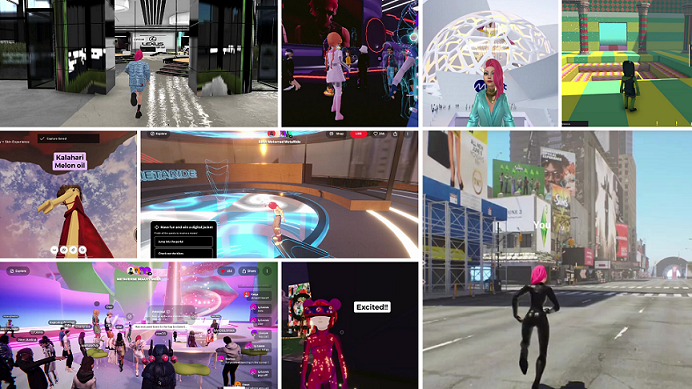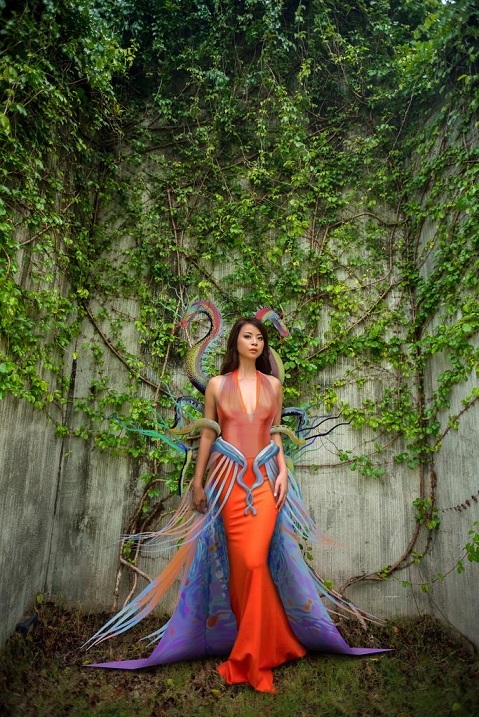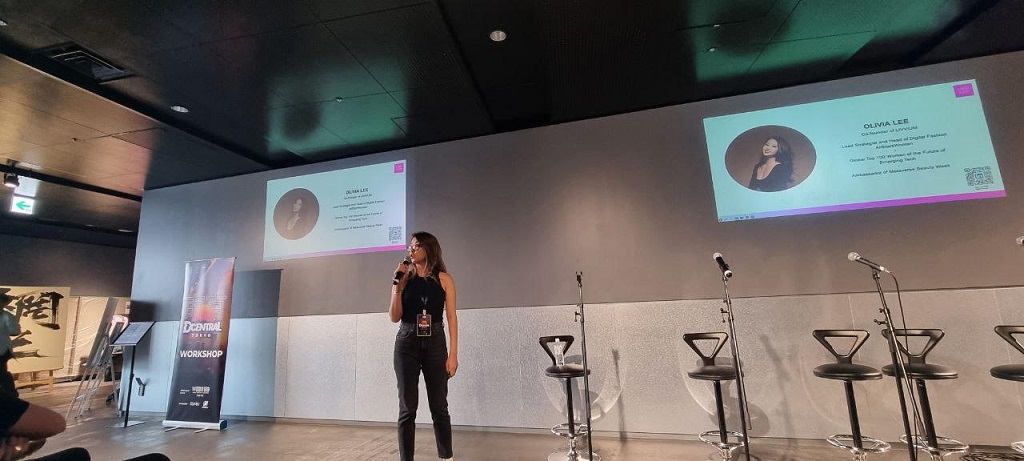By Verghese V Joseph –
Although the concept of Web3.0 appears to be fading, Olivia Lee, a prominent figure in the Web3.0 space, co-founder of Hong Kong-based LIVVIUM, and a champion of Web3, Digital Fashion, and the Metaverse, believes that people are now adapting to the changes.
Olivia’s unusual path and talent in the digital arena make for an engaging and informative chat. Over the last two decades, she has held a number of prominent positions in a variety of businesses. Olivia’s considerable expertise has given her a thorough understanding of a wide range of industries, from banking to luxury brands, private equity to marketing and logistics. Her path to the digital realm was unexpected, having begun with a chance contact with a Metaverse investment deck while working as the head of marketing for a private investment business. The idea of a 3D immersive environment for buying, playing, and experiencing businesses from around the world spoke to her passionately.
Olivia has since dabbled in Web3.0, purchasing cryptocurrencies, obtaining NFTs, and investigating the Metaverse. She founded her own Web3.0 consulting firm, LIVVIUM, with the goal of guiding brands through the transition and incorporation of the Web3.0 idea. Olivia shares essential insights into the ever-changing world of Web3.0, the nexus of digital fashion, retail, beauty, and technology, in an exclusive interview.
NFT, Digital Fashion, Metaverse in the landscape of Web3

Starting with Web3 was like walking into a whole new universe for her, and she loves it! When one considers the early days of the Internet (Web1), it was largely one-sided – businesses disseminated information, and netizens absorbed it. Fast forward to Web2, when social media (and the smartphone) were formed, and any user was able to share their tales and material with the globe, with everyone connecting and sharing with one another.
Olivia feels we are witnessing the birth of Web3, which will be a game changer. “Imagine owning every piece of content you create, every comment you make, and being able to take it wherever you want.” It’s like transferring power away from the major tech giants and giving it to creators and users. “There will be no middlemen, no censorship, just pure, unfiltered creativity and connection,” she explained.
Olivia provided an example of why NFTs, Metaverse, and Digital Fashion are important, stating, “In the context of gaming, imagine that I spend a lot of my time and money in an online game that I play.” It allows me to unwind and “disconnect” while also connecting with my “online friends.” Consider how much money I spent over the years building my armoury of tools and skins to improve my game-play. Now assume that one day that game decides to “close” and that all of my effort spent producing my assets is gone and unusable because the game is no longer available because it is owned by the company who produced and hosted it. Now assume that I essentially own all of the digital assets on the chain, and that I can buy, sell, and, more importantly, “import” those assets to another world that I can use indefinitely. “The game may have changed, but I still own those assets.”

Why Digital Fashion?
We’ll need to discuss the Metaverse, or as she refers to it, the 3D Internet. With the growth of AR and AI (we’ve been aware of such technology for the last decade, but it’s now becoming widespread), we already have access to features and applications that provide us with this 3D experience. She believes that as users, we have evolved to be more attention-hungry, seeking out new experiences and novelties. We’ve also grown more sophisticated and demanding of high-quality experiences. Personally, the Metaverse has become an outlet for us to explore and seek new connected experiences. This was a great outlet for her throughout COVID-19
She believes that anything that occurs in the physical world may be recreated in the digital realm, including some human behaviors. For her, being in the Metaverse meant that her avatar would need to dress to please as well as find a way to express herself. The beauty of digital fashion is that it allows me to express myself online by wearing anything, whether it’s a branded luxury item or an out-of-this-world piece. Every piece of digital clothing, every NFT, is a distinct manifestation of a person’s individuality.
It’s not just about technology and trends; it’s about stepping into a future in which we are active participants, owners, and creators in a world limited only by our imagination.
Navigating the Evolving Metaverse and Web3
In an age when different countries have different perceptions and approaches to the Metaverse and Web3, it’s clear that the landscape for trading, buying, and selling NFTs or tokenized real-world assets (RWA) varies greatly depending on the region, influenced by different regulations. We’re exploring largely uncharted territory, so there’s a lot of unpredictability and complexity. This space is still evolving, and clarity will only come with time.

Countries such as Hong Kong, by embracing a Web3-friendly atmosphere, play a critical role in bridging the gap between current reality and the expansive vision of a decentralized society.. The early idealistic vision of a completely decentralized, transparent, and free world, free of private companies and centralized institutions, is being reconsidered.
The complexities and obstacles of fully fulfilling this goal are beginning to emerge. The most realistic way ahead will most likely include a collaborative strategy that brings together the activities of government authorities, corporations, and decentralized groups. We can create a balanced ecosystem that adheres to regulatory and ethical norms while upholding the ideas of decentralization. This collaborative approach has the potential to pave the path for the smooth integration of Web3 technologies into our global economy and society.
Now, in the context of digital fashion, digital collectibles, and immersive commerce (another term that is a subclass of Metaverse), Olivia presents three new terms are the Connected User Journey, the Empowered Community, and the Participant Economy. These three concepts represent a “dual-approach” interaction between a brand and a customer. Customers, assuming “holder of a digital collectible within the brand’s ecosystem,” indicate they are a part of the brand’s ecosystem and are welcome to also suggest and thus “co-create” for a brand. At this point, the client is seen as a participant and “stakeholder” in the firm of the brand. This may not always imply monetary benefits, but it does increase the level of participation. This is an example of “brand loyalty.” Members will gain the fundamental value of having a say, which will transcend any regional limits.
In her opinion, there are simply too many possibilities that will arise from the rise of occupations in the Metaverse, particularly for women. To begin, it is critical to understand that the Metaverse and Web3 are still in their early stages. In other words, regardless of your knowledge or skill sets, there are several chances. Speak for herself, she says, demonstrating that with a sense of curiosity and a “go-getter” attitude, one can carve a space for oneself.
Roles that may arise from a matrix of talents and experience, any position that is more or less available in the actual world. Some of the fascinating positions in the digital fashion and beauty field (not including technical/ R&D. engineer) may be:
-Educating others and advocating about the Web3 space (something that she’s actively doing)
-Stylist for avatars! (such a job exists)
-Interior designers for worlds; many Metaverses allow you to upload your designs and get a % of the sales.
-Gaming specialist (marketing activations)
-Filter creators
-Owner of virtual showrooms. You can create your own “shopping mall” and bring in brands. This is no different than a multi-brand e-commerce store.
-tour guide
The Challenges of Web3 Industry: Lessons Learned and Moving Forward
According to Olivia, the transition from Web2 to Web3 marketing failed before it even began. “We were blinded and excited by the idea of the crypto bull run for a short time and allowed empty plans to take over action.” You may recall that NFTs and Roadmaps become an essential component of an offering. Purchasing a plot of land at an extravagant sum became a public relations blitz. Having an NFT (PFP) allows you to travel to the Metaverse (this was simply a notion included in the roadmap). We proceeded quickly, and there were many “false” promises made under the pretext of a roadmap. Many of those are still unrealized today. As a result, not much is sustainable, even with the realization of the crypto winter. The key is to take several steps back and scale back. Discover and engage with daily users. I believe that digital collectibles will be the cornerstone of every business’s brand engagement, if not the entire ecosystem, then a smaller one, such as a specific product line or even a product item,” she explained.
“As you can see now, there is a rise of iCommerce (immersive commerce) ,certainly it should have elements of the Metaverse, this is a 3D world that anyone can access through different access points,” Olivia said. It could be through SnapChat, TikTok, or WebAR, where the user can see themselves in a branded environment, with the ability to try on virtual items on their wrist (such as Cartier or Audemar Piguet Virtual Try On with Snap), or in the near future, all clothing will include an NFC (near field communication) tag embedded into our physical clothing. According to Olivia, what this could mean is that by scanning the NFC with a VTO (Virtual Try On) Mirror at a physical store, it can unlock a tailored experience for the user, either in real life or online, the “Phygital” component.
Overall, Olivia believes it is safe to say that the Metaverse and all of the interesting innovations do not have to be all on chain; we don’t have to expect every element to be on chain, but with some activations on chain, the user and the brand will have unprecedented opportunities to immerse the user in that brand’s world.
Olivia assists her audience and customers in navigating this new digital Universe, having studied over 20 Metaverse platforms and over 50 brand activations since 2021. “As a Web3 and Metaverse Explorer, I find myself understanding Metaverse and its many moving factors on a new and deeper level in relation to human and consumer behavior, marketing, and psychology.” Certainly, my understanding of the Metaverse has evolved significantly during the last three years. I began to pay attention to this area,” she felt.
Olivia specializes at LIVVIUM in allowing brands to smoothly migrate into the realm of Web3, and Roblox is a great platform for developing dynamic, engaging virtual experiences. Their approach is hands-on and tailored to each client’s unique needs and goals. They begin by comprehending a brand’s distinct ethos and ambitions. Her team understands the complexities of Roblox’s user-friendly design interface and diversified, dynamic user base. They use this knowledge to create personalized virtual experiences that connect with the target audience, ensuring that the brand not only exists but flourishes in this digital terrain.
The advantage of LIVVIUM is its multidimensional team of specialists and proven Web3 partners who are not only technologically savvy but also experienced in conceptualizing brand positioning, narrative, and interaction within virtual places such as Roblox. We make certain that the virtual worlds we design are not only visually stunning, but also useful, engaging, and conducive to community and involvement.
What will become of Metaverse platforms?
Olivia currently believes that there is a long way to go in terms of Metaverse platforms. We will soon stop using the term “Metaverse” because it will be completely interwoven into our existing understanding of experiencing the online world, whatever our vice is. Currently, brands are still unsure if they should be on a Metaverse platform; her answer is yes. There are a number of credible platforms, like Spatial, Oncyber, Pixel Canva, and The Omniverse City, that allow firms to experiment at a reasonable cost.
The evolution of eCommerce and social media platforms would be the next stage. Why are so many brands visible and engaged on social media platforms? Because each platform has its own specialty, aesthetics, popularity in different regions, communication methods, and so on. A brand’s presence will extend to WhatsApp Business, X, Facebook, Instagram, TikTok, and XiaoHongShu. Why? Because there is an audience. As a result, she anticipates that a brand will have a presence in a couple of the remaining Metaverse platforms at some point in the future. They will eventually host and own their own Metaverse platform, and everything should be compatible. This would be the ideal user and brand experience.

